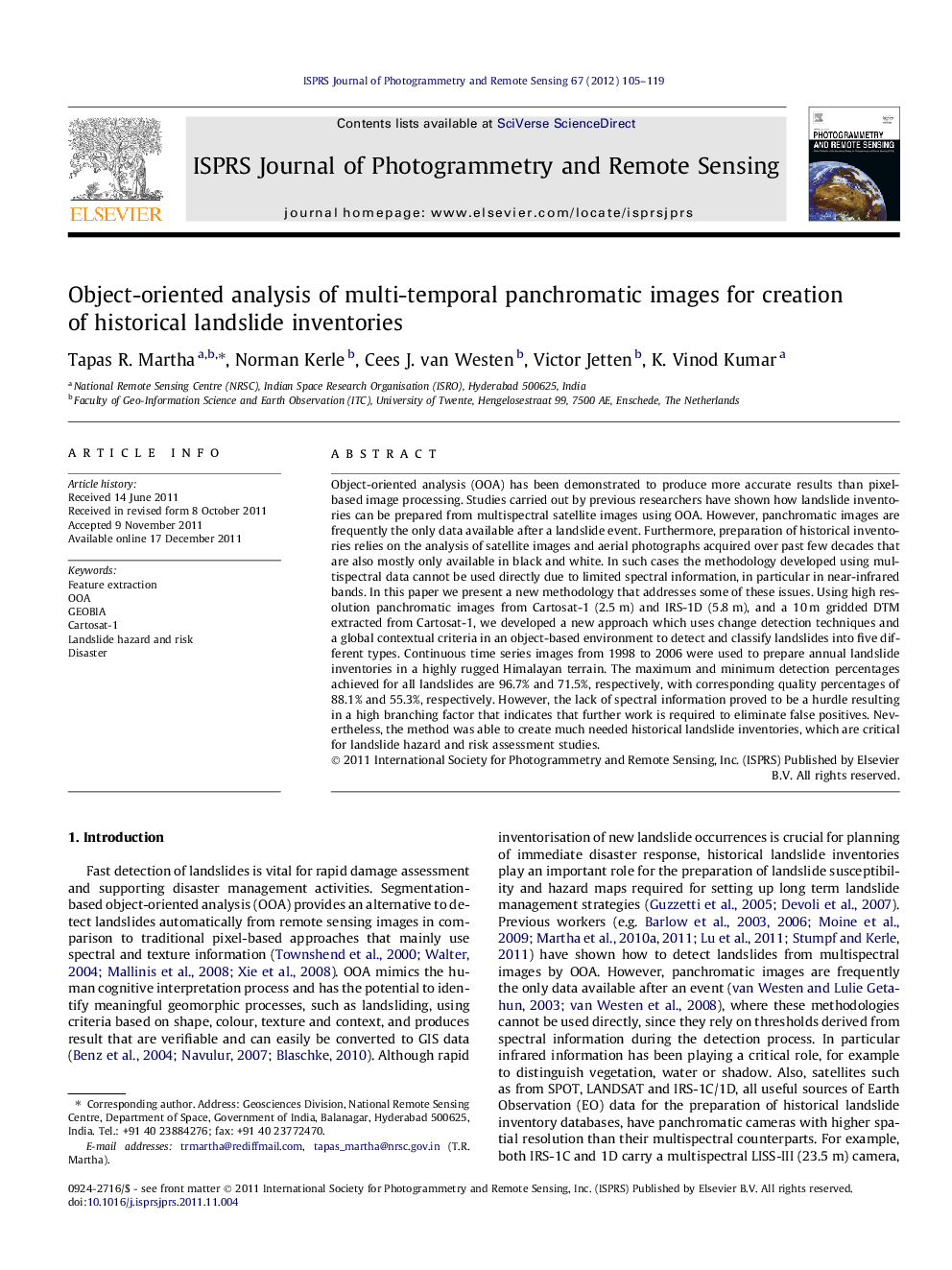| Article ID | Journal | Published Year | Pages | File Type |
|---|---|---|---|---|
| 557345 | ISPRS Journal of Photogrammetry and Remote Sensing | 2012 | 15 Pages |
Object-oriented analysis (OOA) has been demonstrated to produce more accurate results than pixel-based image processing. Studies carried out by previous researchers have shown how landslide inventories can be prepared from multispectral satellite images using OOA. However, panchromatic images are frequently the only data available after a landslide event. Furthermore, preparation of historical inventories relies on the analysis of satellite images and aerial photographs acquired over past few decades that are also mostly only available in black and white. In such cases the methodology developed using multispectral data cannot be used directly due to limited spectral information, in particular in near-infrared bands. In this paper we present a new methodology that addresses some of these issues. Using high resolution panchromatic images from Cartosat-1 (2.5 m) and IRS-1D (5.8 m), and a 10 m gridded DTM extracted from Cartosat-1, we developed a new approach which uses change detection techniques and a global contextual criteria in an object-based environment to detect and classify landslides into five different types. Continuous time series images from 1998 to 2006 were used to prepare annual landslide inventories in a highly rugged Himalayan terrain. The maximum and minimum detection percentages achieved for all landslides are 96.7% and 71.5%, respectively, with corresponding quality percentages of 88.1% and 55.3%, respectively. However, the lack of spectral information proved to be a hurdle resulting in a high branching factor that indicates that further work is required to eliminate false positives. Nevertheless, the method was able to create much needed historical landslide inventories, which are critical for landslide hazard and risk assessment studies.
